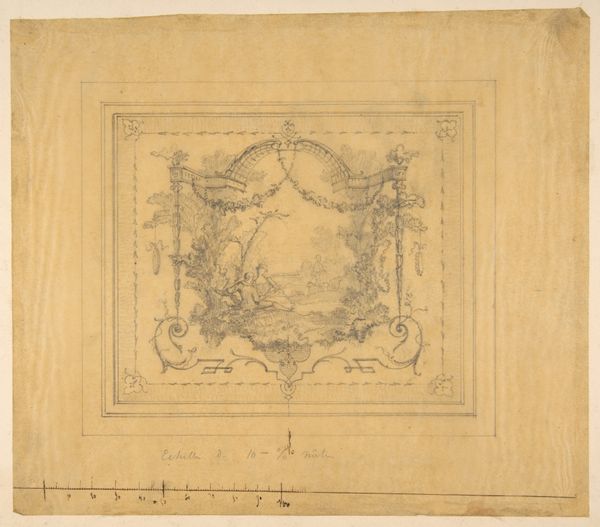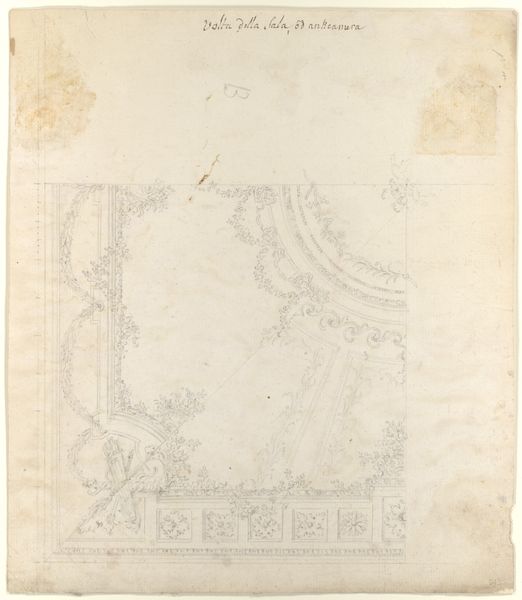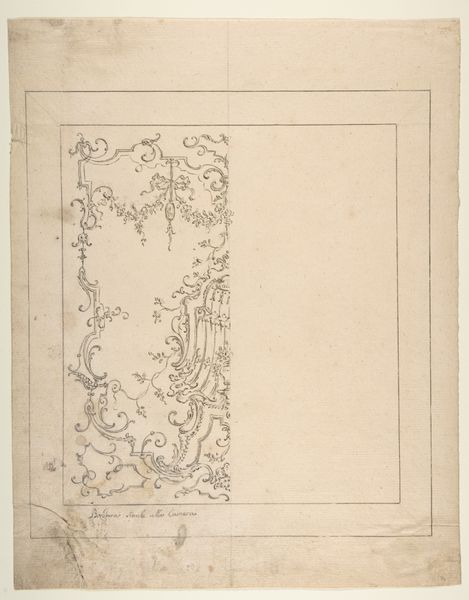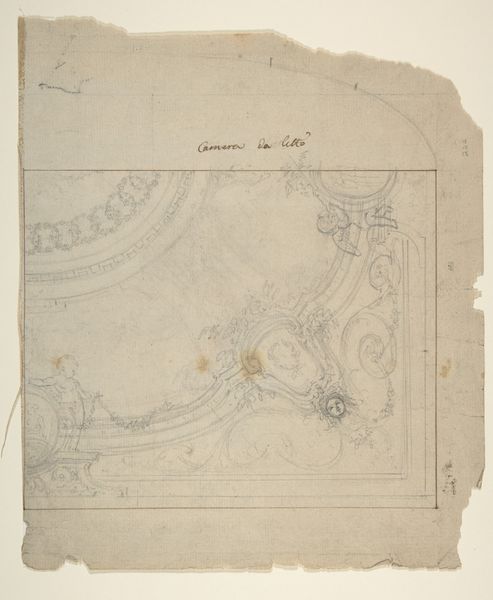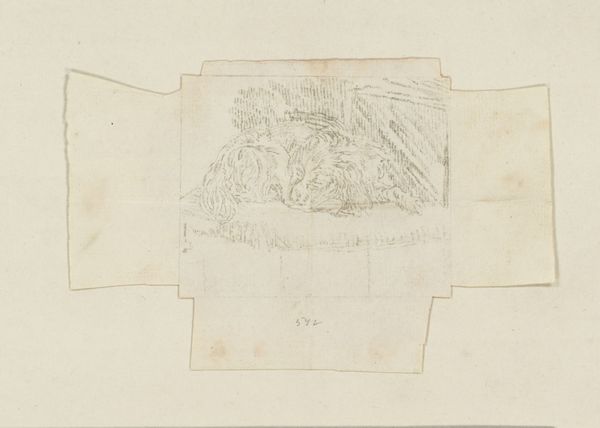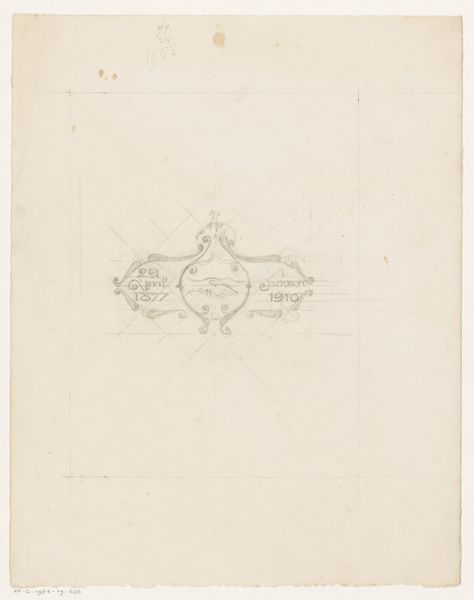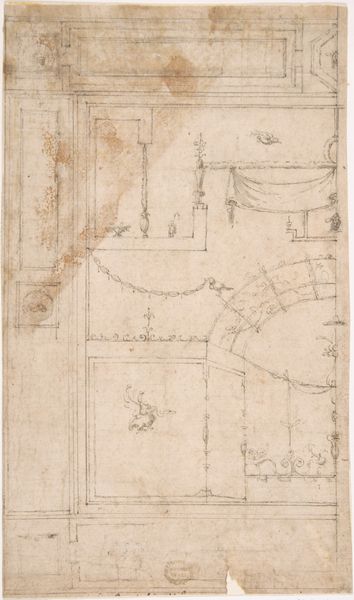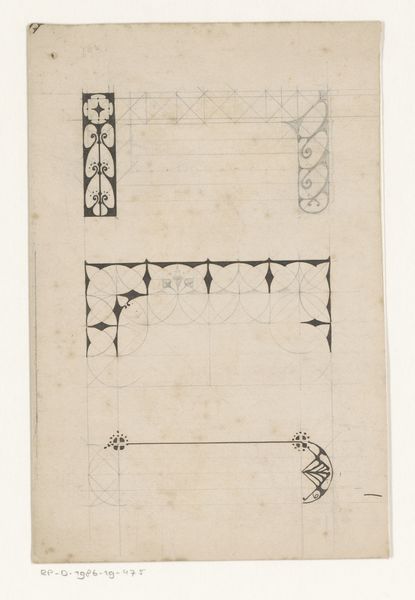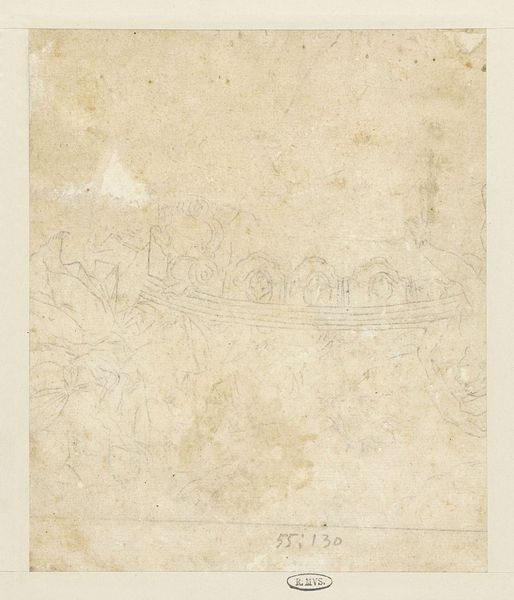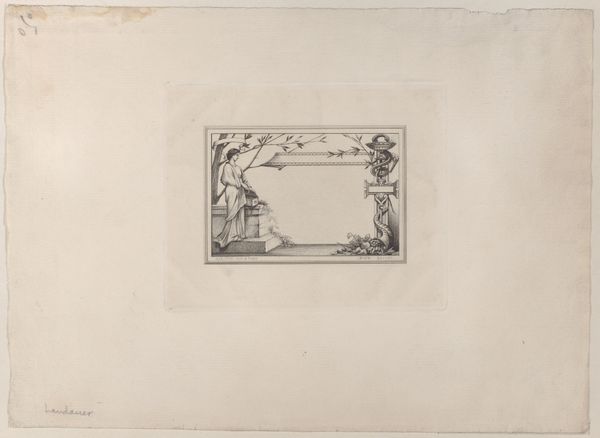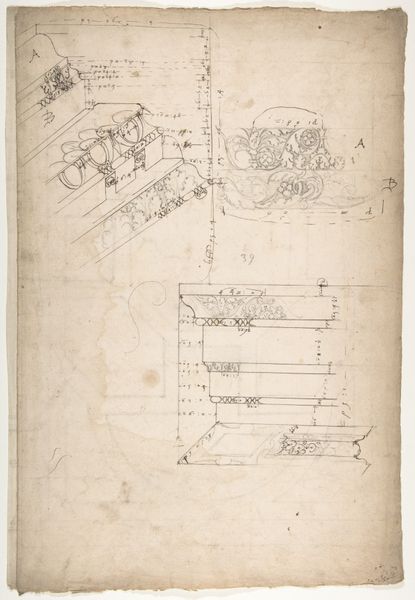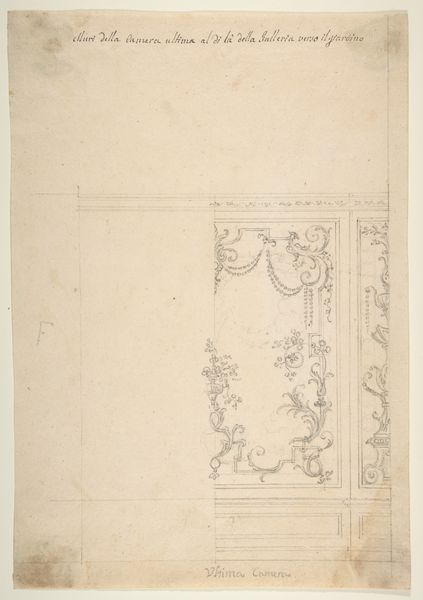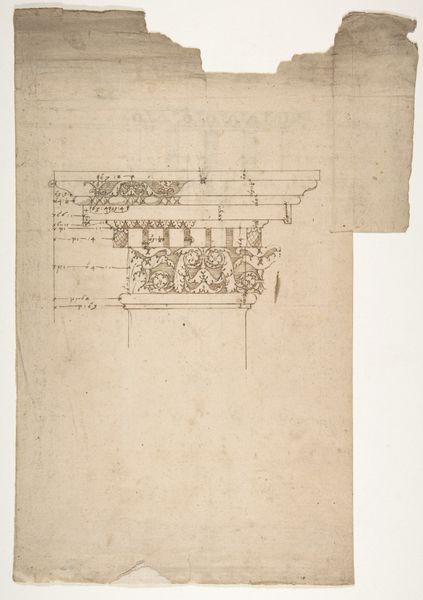
drawing, print, paper, pencil, architecture
#
drawing
#
neoclacissism
# print
#
paper
#
form
#
geometric
#
pencil
#
line
#
architecture
Copyright: Public Domain
Curator: Before us is a rather intriguing drawing from the cusp of the 19th century, entitled "Design for a Ceiling for Thomas Wells." While its creator remains anonymous, it's housed here at the Metropolitan Museum of Art. Made with pencil and print on paper, it provides insight into the decorative arts of the Neoclassical period. What's your initial impression of the sketch? Editor: It feels...restrained, almost melancholic. The limited tonal range creates a sense of faded grandeur. Despite the classical motifs, it’s hard to shake a feeling of loss or unrealized potential. Is that too dramatic? Curator: Not at all. Look closely at how the line dictates the visual experience. There’s a precision, yes, especially in the geometric framework, but also a certain tentativeness. Observe the unfinished sections, the visible construction lines – these reveal the artistic process, emphasizing its inherent structure and design. Editor: Right, but the motifs themselves – the acanthus scrolls, the palmettes, the urn-like forms – they all speak of an era's aspirations to grandeur and order. The repetition of these classical forms symbolizes a yearning for an idealized past, a golden age that served as a model for social and political ideals. Wouldn't you agree that the iconography supersedes the artistic means, particularly in its impact? Curator: The question becomes one of balance. Are these symbols merely replicated forms, or are they invigorated by the context and formal arrangement? I believe it’s in the latter, actually. The artist isn’t slavishly copying classical ideals; instead, they create a variation that is dynamic and well proportioned to its spatial layout, so the formal means become more potent. Editor: Perhaps. But one can't ignore that Thomas Wells was probably aiming to express a particular social status through his ceiling design. What symbolic narratives might the fully realized ceiling have intended to convey to visitors? Visions of permanence, nobility, and an intellectual or even spiritual leaning are what it tells me, at least. Curator: Fascinating considerations. Looking through both lenses here—formal structure and evocative symbolism—certainly elevates our appreciation. The balance between form and sign. Editor: It really makes you reflect on how art always seems to reveal deeper truths, regardless of how grand or constrained it presents itself to be.
Comments
No comments
Be the first to comment and join the conversation on the ultimate creative platform.
